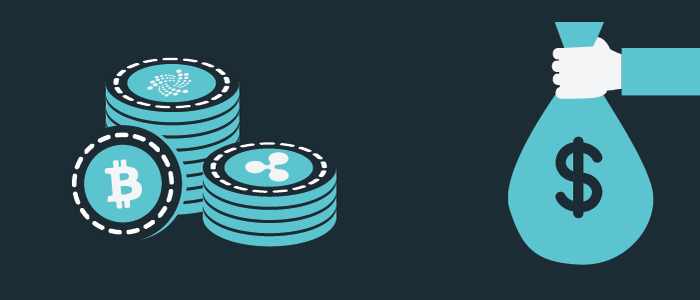There is Bitcoin, There’s Litecoin, There’s Ethereum. So just what is cryptocurrency, and how does it work? Cryptocurrency is a digital currency created by code, can be bought and sold online. There’s no bills or coins. It’s not based on another asset like gold. And it’s beauty is it does not go through traditional financial institutions like banks. Free of all governmental oversight. Instead, these currencies are monitored by a peer-to-peer network protocol and operate in a completely decentralized system that uses blockchain, a technology used to track transactions.
To see how this works, let us look at how you are buying something with cryptocurrency. Say that Virat wants to buy a bat from Sachin using Bitcoin, his cryptocurrency of choice. Virat begins by logging into his Bitcoin wallet with a private key, a unique combination of letters and numbers. With a traditional financial transaction, the exchange gets sent to banks on each side who record the money being subtracted from one account and added to another. But remember, in this scenario, there are no banks or middlemen. Instead, Virat’s transaction is shared with everyone in the Bitcoin network. The requested transaction is broadcasted to a P2P network consisting of computers known as nodes. The network of nodes validates the transaction and the user’s status using known algorithms. A verification process takes place. After verification, the transaction is combined with other transactions. These networked computers add Virat’s transaction to a shared list of recent transactions, known as a block.
Every 10 minutes, the newest block of the transaction is added on, or chained, to all the previous blocks. That’s how you get a blockchain. To ensure that each block of transactions on the chain is verified, a subset of Bitcoin’s network joins a race to solve a difficult math puzzle. And if they solve it first, their record of the blocks of transactions becomes the official record. They’re rewarded with Bitcoins of their own, and the network gets a new block on the chain. This entire process is known as mining. But instead of chipping away at rocks, you’re solving complex puzzles. The fact that many computers are competing to verify a block ensures that no single computer can monopolize the Bitcoin market. To ensure the competition stays fair and evenly timed, the puzzle becomes harder when more computers join in. The Bitcoin protocol says mining will continue until there are 21 million Bitcoins in existence. That’s set to happen around 2140 if Bitcoin lasts that long.

